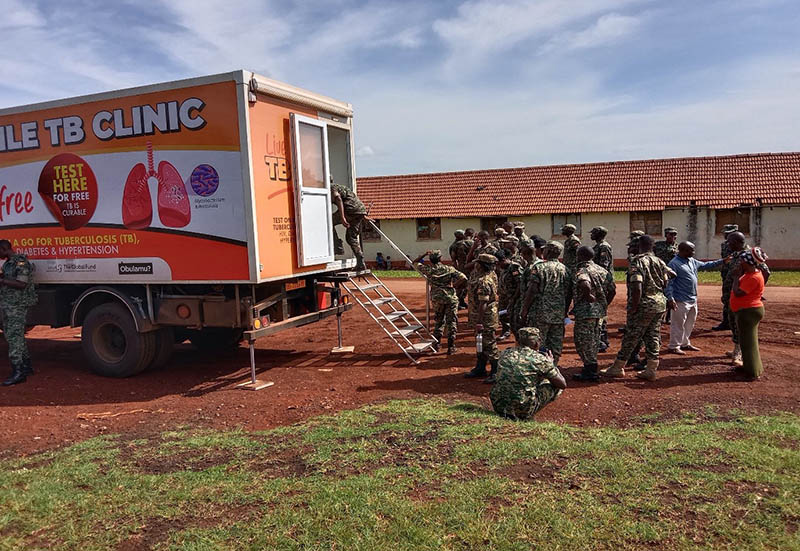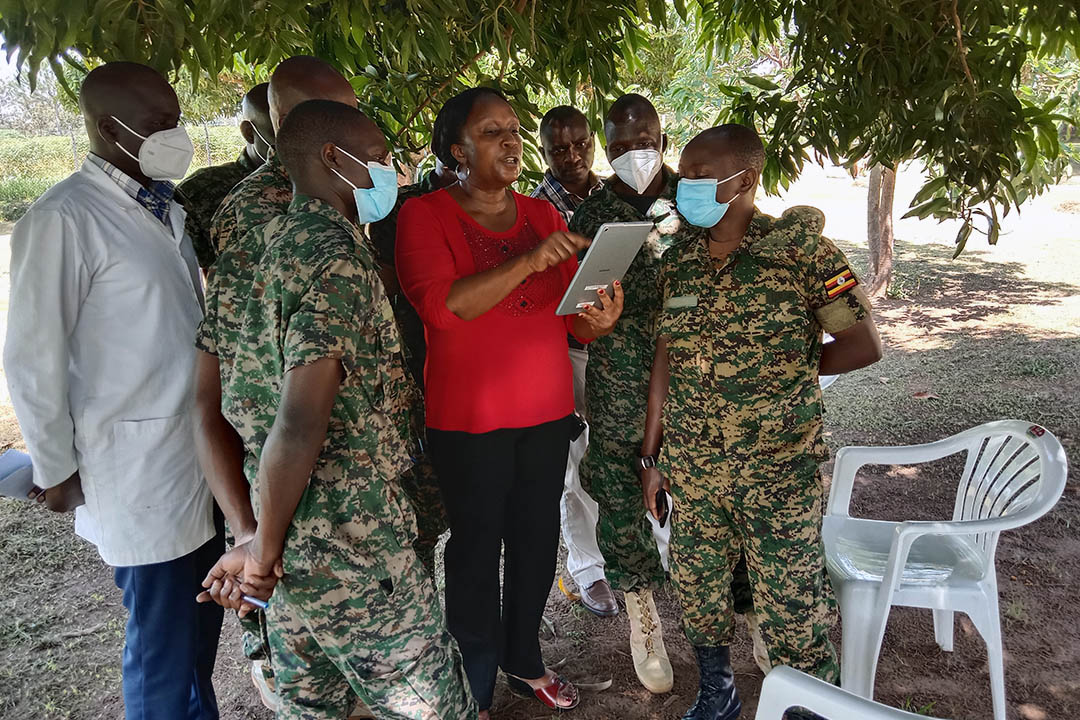As the world’s deadliest infectious disease, TB infects approximately 10 million people globally each year, killing 1.5 million of these.
Uganda is one of the 22 WHO-designated TB high burden countries. On Uganda’s military bases, there is a high potential of contracting TB due to overcrowded living conditions and a high smoking rate in the Uganda People’s Defence Forces (UPDF).
In passive case finding, diagnosis and treatment occur when symptomatic patients present to health care facilities. Without an active effort to identify TB cases through active case finding, individuals with minimal symptoms might not be screened for and diagnosed with TB. This contributes to delayed diagnosis, with consequent unfavorable treatment outcomes and socioeconomic strain.
The Challenge of TB Case Notification in UPDF Health Facilities
The DoD Uganda URC Project supports UPDF health facilities to improve HIV and TB services. By April 2022, Ugandan military health facilities only achieved 42% of their annual TB case notification target despite implementing all the routine TB case detection activities.
The primary reason for the low TB case detection is the suboptimal screening of eligible clients and limited investigative capacity at UPDF health facilities. UPDF has limited functional x-ray machines and onsite GeneXpert molecular laboratory testing services, which contributes to missed opportunities for TB diagnosis.

The Game Changer
To address the low TB case detection rate, the DoD Uganda URC Project, in collaboration with UPDF Directorate of HIV (DHIV) and Uganda’s National TB and Leprosy Program (NTLP), conducted a community mobile TB screening exercise using trucks brought into military bases.
The mobile digital x-ray technology includes artificial intelligence (AI)-assisted TB diagnosis. The technology also uses a grading system that allows for improved presumption of TB with a 50% grading cut off for an abnormal chest x-ray to prompt for additional sputum sample testing, thus increasing both radiological and laboratory investigation for TB cases. This technology is coupled with referrals for additional diagnostic testing for the identified presumptive cases.
To date, the DoD Uganda URC Project has supported community TB screening and testing campaigns to improve TB case detection at 18 military health facilities.
Pre-Community Mobile TB Screening Process
Prior to the implementation of the community TB screening, URC worked with the NTLP and UPDF DHIV to:
- Ensure availability of equipment from NTLP and secure authorization from UPDF leadership to conduct the activities;
- Send messages to targeted military bases to allow for the mass mobilization of UPDF members and civilians in the surrounding communities;
- Contact the respective military health facility in-charges – or health providers leading the facility – to work with military base structures and target and share messages with military bases; and
- Engage Political Commissars (PCs) and Regimental Sergeant Majors (RSMs) to mobilize all UPDF service members and provide TB prevention messages under their leadership.
Mobile TB Screening Process
During the implementation days at the respective mobile TB screening sites, RSMs and other health facility staff conducted door-to-door mobilization of UPDF service members. The screening truck was moved to locations most convenient to target groups.
The health workers at the respective military health facilities were also mobilized to participate in various roles engaging them in the mobile TB screening, including client screening, registration/documentation, laboratory sample removal and processing/packaging among others. They were supervised and mentored by the mobile TB clinic team from NTLP, DHIV and the DoD Uganda URC Project. They were also asked to refer all in-patient and out-patient clients with a cough for x-ray screening at a mobile screening site.

Results
By the last few months of 2022, the annual TB case detection target was surpassed – UPDF achieved 106% of its target. And the mobile community TB screening contributed to 1 of 4 new TB cases identified by the UPDF during the same time period.
The mobile community TB screening using AI-supported digital x-ray services is a novel, effective, and accepted tool to improve TB case detection in communities with a high TB burden. Its value in TB case finding in low investigative and diagnostic capacity settings is undeniable.



